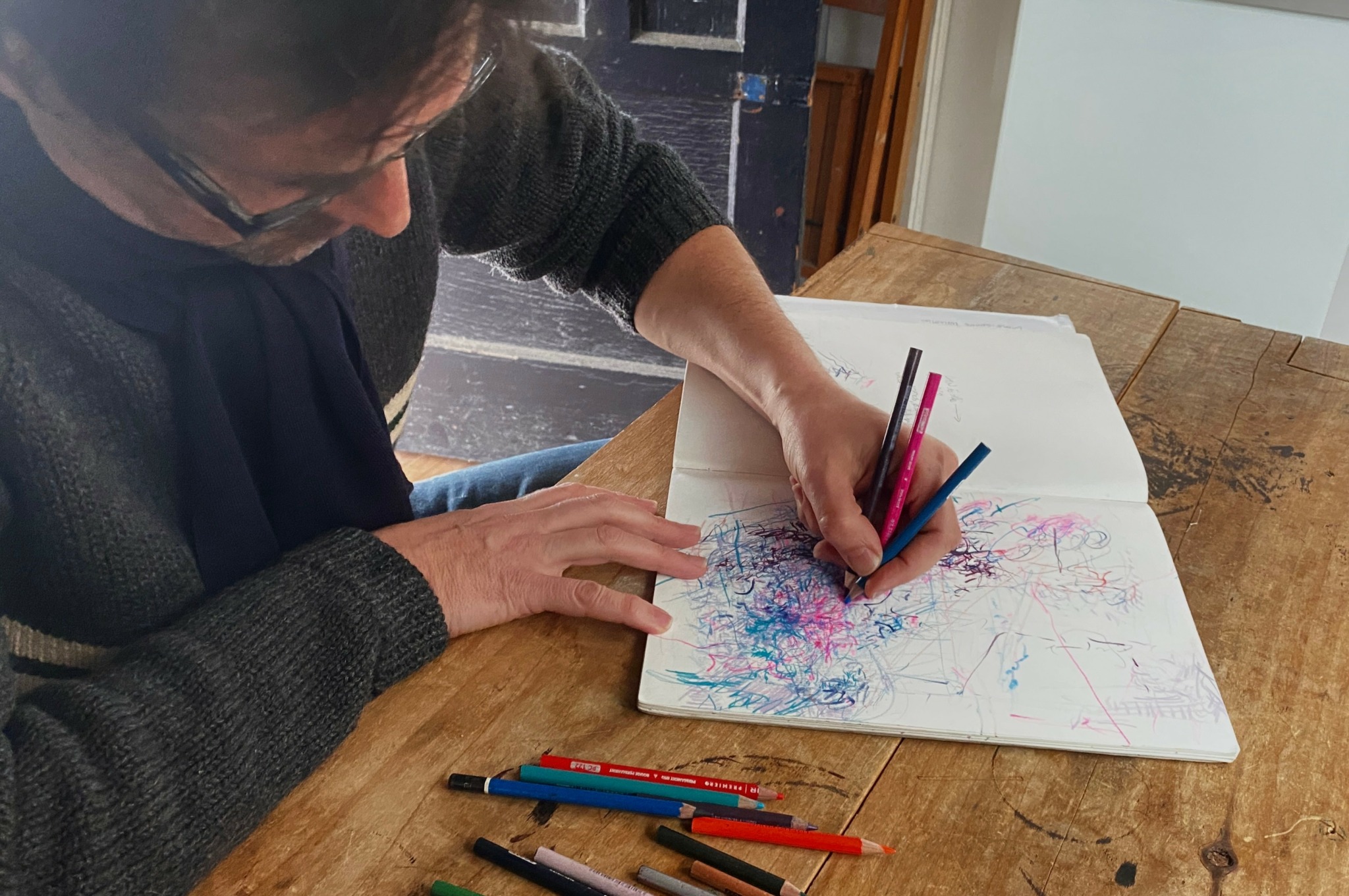We recently connected with Thomas Bosket and have shared our conversation below.
Thomas, thanks for joining us, excited to have you contributing your stories and insights. We’d love to hear about a project that you’ve worked on that’s meant a lot to you.
ENGN (engncntr.com) is my non-profit – cofounded with Isaac Green Diebboll. We are community creative civic practice that expands opportunities for youth. One of our most fulfilling projects was What Makes A Village a youth focused curriculum that opens communication among neighbors and government through creative work.


Thomas, before we move on to more of these sorts of questions, can you take some time to bring our readers up to speed on you and what you do?
“My drawings reconnect you with the freedom you felt as a child.”
I was raised by farmers and engineers—practical people who saw art as a waste of time and money. But I came to realize that the arts are not just economic drivers but also spiritual support for the complexities of daily life. They help us process the speed and intensity of what we experience each day.
I also sustained a spinal injury that left my spine frozen from mid-thoracic to the base of my skull. After six months of visits to Yale New Haven’s medical center with little progress, I sought out Dyal Singh Khalsa, a yogic neuromuscular therapist. After just 1.5 hours, I regained full mobility. During the session, Dyal asked me to chant “SatNam” as my arms moved involuntarily. He said I was experiencing excess energy. I didn’t fully understand it at the time, but this experience shaped my embodied understanding of energy, which now forms the foundation of my use of abstraction. Through abstraction, energy blocks that are creative blocks – get released.
I create creative civic experiences, mostly for youth, though I’ve also led professional development workshops in 22 countries for over 32 years. I draw every day. My practice enriches my life by questioning norms, pushing my mental boundaries, and testing my limits, all while working in an embodied, often trancelike state. This is what supports me financially.
My abstracts map unseen energies, guiding viewers to explore their inner worlds and cultivate mindfulness. I consider myself an “unhinged colearner”—drifting through cosmos—watch our brains uncurl.
You asked what problems I can solve. Well, The New York Times named me one of the world’s top color theory experts. My drawings, influenced by the philosophies of Deleuze and Guattari, explore multiplicity, becoming, and the interconnectedness of thought and being. This creates not just a visual experience, but a conceptual and meditative one. Unlike many abstract artists, I focus on movement and form, distilling fleeting moments into tangible, embodied experiences—especially relevant post-COVID when so many feel disconnected. Through my work with ENGN {engine}, a civic organization that connects art, civics, and life, I foster both community and personal growth. I’m committed to using art (not the artifact) as a tool for societal change, my practice is more than personal expression.


In your view, what can society to do to best support artists, creatives and a thriving creative ecosystem?
I have to flip this a bit and ask, what can artists do to best support their society? It’s a long story, but I came to realized (in my small rural village/county) that if I was to succeed as an artist I would have to plunder almost all the resources of every other artist if I took my income from the “art pool”. So, I looked into larger pools; healthcare, education, the National Parks Service, professional development budget lines in various corporations, the Center for Workforce Development (a governmnent agency) and the county jail for funding my art projects. This led to a decent living and many wonderful partnerships/friendships. It also led to my mentoring and recommending other artists to places, or opportunities, for employment. The model of almost begging for a grant or small art budget flipped to one where we have a non-profit that can work on much larger scales and support a host of creatives.


Looking back, are there any resources you wish you knew about earlier in your creative journey?
I read a small, tiny, little booklet on business released by Harvard and it changed my life forever as I stated above. And you don’t have to do much research to find out where, but I worked for an esteemed university for over 16 years and almost too late realized they needed me – the artist – way more than I needed them. Weaving the world we want to live in is hard, I won’t deny that, but it’s not impossible. There are rivers of money and opportunities running just past us all the time and we have to learn how to divert that money toward our visions. I’m not saying I was unrealistic, I draw abstractly and that is largely not of use to my local culture so I use my skills learned during drawing contemporary abstractions to connect with the concerns of my community. One example would be my ability to assess large patterns, that can not be held in the mind, which leads to my awareness of behavioral conditions in a highschool and to formulate possible strategies to address those concerns in concrete and meaningful, personal manners. This leads to success for the youth and ultimately for me. What I gain is somewhat separate, at least on an obvious level, to my abstract drawing – but deeper down, they are inextricably entwined.
Contact Info:
- Website: https://thomasbosket.com
- Instagram: thomas_bosket
- Facebook: https://www.facebook.com/thomasbosketartist/
- Youtube: https://www.youtube.com/c/ThomasBosket


Image Credits
Thomas Bosket


